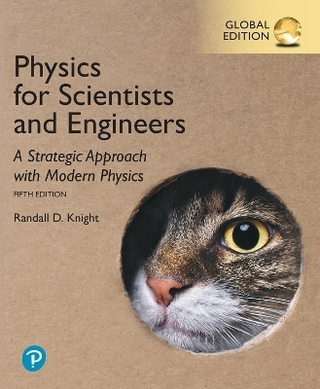
Crystal Growth Technology
John Wiley & Sons Inc (Hersteller)
978-0-470-87168-3 (ISBN)
- Titel ist leider vergriffen;
keine Neuauflage - Artikel merken
This volume deals with the technologies of crystal fabrication, of crystal machining, and of epilayer production and is the first book on industrial and scientific aspects of crystal and layer production. The major industrial crystals are treated: Si, GaAs, GaP, InP, CdTe, sapphire, oxide and halide scintillator crystals, crystals for optical, piezoelectric and microwave applications and more. Contains 29 contributions from leading crystal technologists covering the following topics: General aspects of crystal growth technology Silicon Compound semiconductors Oxides and halides Crystal machining Epitaxy and layer deposition Scientific and technological problems of production and machining of industrial crystals are discussed by top experts, most of them from the major growth industries and crystal growth centers. In addition, it will be useful for the users of crystals, for teachers and graduate students in materials sciences, in electronic and other functional materials, chemical and metallurgical engineering, micro-and optoelectronics including nanotechnology, mechanical engineering and precision-machining, microtechnology, and in solid-state sciences.
Contributors. Preface. PART 1: GENERAL ASPECTS OF CRYSTAL GROWTH TECHNOLOGY. 1. The Development of Crystal Growth Technology (H. J. ScheelI). Abstract. 1.1 Historical Introduction. 1.2 The Development of Crystal-growth Methods. 1.3 Crystal-growth Technology Now. 1.4 Conclusion. References. 2. Thermodynamic Fundamentals of Phase Transitions Applied to Crystal Growth Processes (P. Rudolph). 2.1 Introduction. 2.2 Perfect and Real Structure of Grown Crystals. 2.3 Thermodynamics of Phase Equilibrium. 2.4 Thermodynamics of Topical Crystal Growth Problems. 2.5 Deviation from Equilibrium. References. 3. Interface-kinetics-driven Facet Formation During Melt Growth of Oxide Crystals (S. Brandon, A. Virozub and Y. Liu). Abstract. 3.1 Introduction. 3.2 Model Development. 3.3 Results and Discussion. 3.4 Conclusions. Acknowledgments. Note Added in Proof. References. 4. Theoretical and Experimental Solutions of the Striation Problem (H. J. Scheel). Abstract. 4.1 Introduction. 4.2 Origin and Definitions of Striations. 4.3 Homogeneous Crystals with keff ?1. 4.4 Segregation Phenomena and Thermal Striations. 4.5 Growth of Striation-Free KTN Crystals. 4.6 Alternative Approaches to Reduce Striations. 4.7 Discussion. References. 5. High-resolution X-Ray Diffraction Techniques for Structural Characterization of Silicon and other Advanced Materials (K. Lal). 5.1 Introduction. 5.2 High-resolution X-Ray Diffraction Techniques. 5.3 Evaluation of Crystalline Perfection and Characterization of Crystal Defects. 5.4 Accurate Determination of Crystallographic Orientation. 5.5 Measurement of Curvature or Bending of Single-crystal Wafers. 5.6 Characterization of Process-induced Defects in Semiconductors: Implantation-induced Damage. 5.7 Conclusions. References. 6. Computational Simulations of the Growth of Crystals from Liquids (A. Yeckel and J. J. Derby). 6.1 Introduction. 6.2 Transport Modeling in Bulk Crystal Growth. 6.3 Computational Issues. 6.4 Examples of One-, Two-, and Three-dimensional Models. 6.5 Summary and Outlook. Acknowledgments. References. 7. Heat and Mass Transfer under Magnetic Fields (K. Kakimoto). Abstract. 7.1 Introduction. 7.2 Magnetic Fields Applied to Czochralski Growth. 7.3 Numerical Modeling. 7.4 Vertical Magnetic Field (VMF). 7.5 Cusp-shaped Magnetic Fields (CMF). 7.6 Transverse Magnetic Fields (TMF). 7.7 Summary. Acknowledgment. References. 8. Modeling of Technologically Important Hydrodynamics and Heat/Mass Transfer Processes during Crystal Growth (V. I. Polezhaev). 8.1 Introduction. 8.2 Technologically Important Hydrodynamics Processes during Crystal Growth. 8.3 Benchmark Problem. 8.4 Hierarchy of the Models and Codes and Summary of Benchmark Exercises. 8.5 Gravity-driven Convection Instability and Oscillations in Benchmark Configuration. 8.6 Convective Interaction and Instabilities in Configuration of Industrial GaAs Czochralski Growth. 8.7 Conclusions. Acknowledgments. References. PART 2: SILICON. 9. Influence of Boron Addition on Oxygen Behavior in Silicon Melts (K. Terashima). Abstract. 9.1 Introduction. 9.2 Oxygen Behavior in Boron-doped Silicon Melts. 9.3 Conclusion. Acknowledgments. References. 10. Octahedral Void Defects in Czochralski Silicon (M. Itsumi). 10.1 Background. 10.2 Observation Methods. 10.3 Characterization. 10.4 Generation Mechanism. 10.5 Elimination. 10.6 Oxide Defect Generation. 10.7 Concluding Remarks. References. 11. The Control and Engineering of Intrinsic Point Defects in Silicon Wafers and Crystals (R. Falster, V. V. Voronkov and P. Mutti). Abstract. 11.1 Introduction. 11.2 The Control of the Agglomeration of Intrinsic Point Defects during Crystal Growth. 11.3 The Control of Oxygen Precipitation through the Engineering of Vacancy Concentration in Silicon Wafers: Magic Denuded ZoneTM Wafers. 11.4 Conclusions Drawn Regarding the Intrinsic Point-Defect Parameters taken from the Combination of Crystal Growth and MDZ Experiments. 11.5 Unified Schematic Pictures of Vacancy Control for Crystal Growth and Wafer Processing. Acknowledgments. References. 12. The Formation of Defects and Growth Interface Shapes in CZ Silicon (T. Abe). Abstract. 12.1 Introduction. 12.2 Experiments. 12.3 Results. 12.4 Discussion. 12.5 Conclusions. References. 13. Silicon Crystal Growth for Photovoltaics (T. F. Ciszek). 13.1 Introduction . 13.2 Basic Concepts. 13.3 Silicon Source Materials. 13.4 Ingot Growth Methods and Wafering. 13.5 Ribbon/Sheet Growth Methods. 13.6 Thin-Layer Growth on Substrates. 13.7 Comparison of Growth Methods. 13.8 Future Trends. References. PART 3: COMPOUND SEMICONDUCTORS. 14. Fundamental and Technological Aspects of Czochralski Growth of High-quality Semi-insulating GaAs Crystals (P. Rudolph and M. Jurisch). 14.1 Introduction. 14.2 Features and Fundamental Aspects of LEC Growth of SI GaAs Crystals. 14.3 Modified Czochralski Technologies. 14.4 Conclusions and Outlook. Acknowledgement. References. 15. Growth of III-V and II-VI Single Crystals by the Verticalgradient-freeze Method (T. Asahi, K. Kainosho, K. Kohiro, A. Noda, K. Sato and O. Oda). 15.1 Introduction. 15.2 InP Crystal Growth by the VGF Method. 15.3 GaAs Crystal Growth by the VGF Method. 15.4 CdTe Crystal Growth by the VGF Method without Seed Crystals. 15.5 ZnTe Crystal Growth by VGF without Seed Crystals using the High-pressure Furnace. 15.6 Summary. References. 16. Growth Technology of III-V Single Crystals for Production (T. Kawase, M. Tatsumi and Y. Nishida). 16.1 Introduction. 16.2 Properties of III-V Materials. 16.3 Growth Technology of III-V Materials. 16.4 Applications and Requirements for GaAs Single Crystals. 16.5 Growth of Large Single Crystals. 16.6 Growth of Low-Dislocation-Density GaAs Crystal. 16.7 Control of Quality and Yield of GaAs Crystals. 16.8 Control of the Electronic Quality of GaAs. 16.9 Trend of Growth Methods for GaAs. 16.10 InP. 16.11 Summary. References. 17. CdTe and CdZnTe Growth (R. Triboulet). 17.1 Introduction. 17.2 Phase Equilibria in the Cd-Te System. 17.3 Crystal Growth versus Cd-Te Chemical Bond Characteristics. 17.4 Crystal Growth. 17.5 Bridgman Growth Modeling and Interface-shape Determination. 17.6 CdZnTe Properties. 17.7 Properties and Defects of the Crystals. 17.8 Purity, Contamination, Doping. 17.9 Conclusions and Perspectives. References. PART 4: OXIDES AND HALIDES. 18. Phase-diagram Study for Growing Electro-optic Single Crystals (S. Miyazawa). Abstract. 18.1 Introduction. 18.2 Phase-relation Study of LiTaO3. 18.3 Phase-relation Study of Bi12TiO20. 18.4 Summary. Acknowledgment. References. 19. Melt Growth of Oxide Crystals for SAW, Piezoelectric, and Nonlinear-Optical Applications (K. Shimamura, T. Fukuda and V. I. Chani). 19.1 Introduction. 19.2 LiTaO3 for SAW Devices. 19.3 Langasite-family Crystals for Piezoelectric Applications. 19.4 Nonlinear-Optical Crystals for Blue SHG. 19.5 Summary. References. 20. Growth of Nonlinear-optical Crystals for Laser-frequency Conversion (T. Sasaki, Y. Mori and M. Yoshimura). 20.1 Introduction. 20.2 Crystals Grown from Low-temperature Solutions. 20.3 Crystals Grown from High-temperature Solutions. 20.4 Conclusions. References. 21. Growth of Zirconia Crystals by Skull-Melting Technique (E. E. Lomonova and V. V. Osiko). 21.1 Introduction. 21.2 Physical and Technical Aspects of the Direct Radiofrequency Melting in a Cold Container (Skull Melting). 21.3 RF-furnaces for Zirconia Melting and Crystallization. 21.4 Phase Relations in Zirconia Solid Solutions. Y-stabilized (YCZ) and Partially Stabilized (PSZ) Zirconia. 21.5 Growth Processes of YCZ and PSZ Crystals. 21.6 Structure, Defects, and Properties of YCZ and PSZ Crystals. 21.7 Applications of YCZ and PSZ Crystals. 21.8 Conclusion. Acknowledgments. References. 22. Shaped Sapphire Production (L. A. Lytvynov). 22.1 Introduction. 22.2 Crystal-growth Installation. 22.3 Growing of Crucibles. 22.4 Growth of Complicated Shapes. 22.5 Dice. 22.6 Group Growth. 22.7 Local Forming. 22.8 Sapphire Products for Medicine. 22.9 Improvement of Structure Quality of Profile Sapphire. References. 23. Halogenide Scintillators: Crystal Growth and Performance (A. V. Gektin and B. G. Zaslavsky). 23.1 Introduction. 23.2 Modern Tendency in AIBVII Crystal Growth. 23.3 Modified Method of Automated Pulling of Large-size Scintillation Crystals. 23.4 Experimental and Practical Method Realization. 23.5 Scintillator Quality. 23.6 Conclusion. References. PART 5: CRYSTAL MACHINING. 24. Advanced Slicing Techniques for Single Crystals (C. Hauser and P. M. Nasch). Abstract. 24.1 Introduction. 24.2 Geometrical Parameters. 24.3 Survey on Slicing Methods for Silicon Single Crystal. 24.4 Material-removal Process. 24.5 General Comparison of Different Slicing Methods. 24.6 Surface Damage. 24.7 Economics. 24.8 Crystal Orientation. References. 25. Methods and Tools for Mechanical Processing of Anisotropic Scintillating Crystals (M. Lebeau). 25.1 Introduction. 25.2 Crystals. 25.3 Machine-tools and Diamond Cutting Disks. 25.4 Tooling for Cutting Operations. 25.5 Tools for Lapping and Polishing Operations. 25.6 Optical Method for Inspection of Crystal Residual Stresses. 25.7 Conclusions and Production Forecasts. References. 26. Plasma-CVM (Chemical Vaporization Machining) (Y. Mori, K. Yamamura, and Y. Sano). 26.1 Introduction. 26.2 Concepts of Plasma-CVM. 26.3 Applications of Plasma-CVM. 26.4 Slicing. 26.5 Planarization. 26.6 Figuring. Acknowledgements. References. 27. Numerically Controlled EEM (Elastic Emission Machining) System for Ultraprecision Figuring and Smoothing of Aspherical Surfaces (Y. Mori, K. Yamauchi, K. Hirose, K. Sugiyama, K. Inagaki and H. Mimura). 27.1 Introduction. 27.2 Features and Performances. 27.3 Atom-removal Mechanism. 27.4 Numerically Controlled EEM System. 27.5 Numerical Control System. 27.6 Conclusion. Acknowledgement. References. PART 6: EPITAXY AND LAYER DEPOSITION. 28. Control of Epitaxial Growth Modes for High-performance Devices (H. J. Scheel). Abstract. 28.1 Introduction. 28.2 Seven Epitaxial Growth Modes and the Role of Growth Parameters. 28.3 Control of Growth Modes. 28.4 Conclusions. General References. References. 29. High-rate Deposition of Amorphous Silicon Films by Atmospheric pressure Plasma Chemical Vapor Deposition (Y. Mori, H. Kakiuchi, K. Yoshii and K. Yasutake). Abstract. 29.1 Introduction. 29.2 Atmospheric-Pressure Plasma CVD. 29.3 Experimental. 29.4 Results and Discussion. 29.5 Conclusion. Acknowledgements. References. Index.
| Erscheint lt. Verlag | 19.2.2004 |
|---|---|
| Verlagsort | New York |
| Sprache | englisch |
| Maße | 155 x 230 mm |
| Gewicht | 1016 g |
| Themenwelt | Naturwissenschaften ► Physik / Astronomie |
| Technik ► Maschinenbau | |
| ISBN-10 | 0-470-87168-7 / 0470871687 |
| ISBN-13 | 978-0-470-87168-3 / 9780470871683 |
| Zustand | Neuware |
| Haben Sie eine Frage zum Produkt? |
aus dem Bereich


